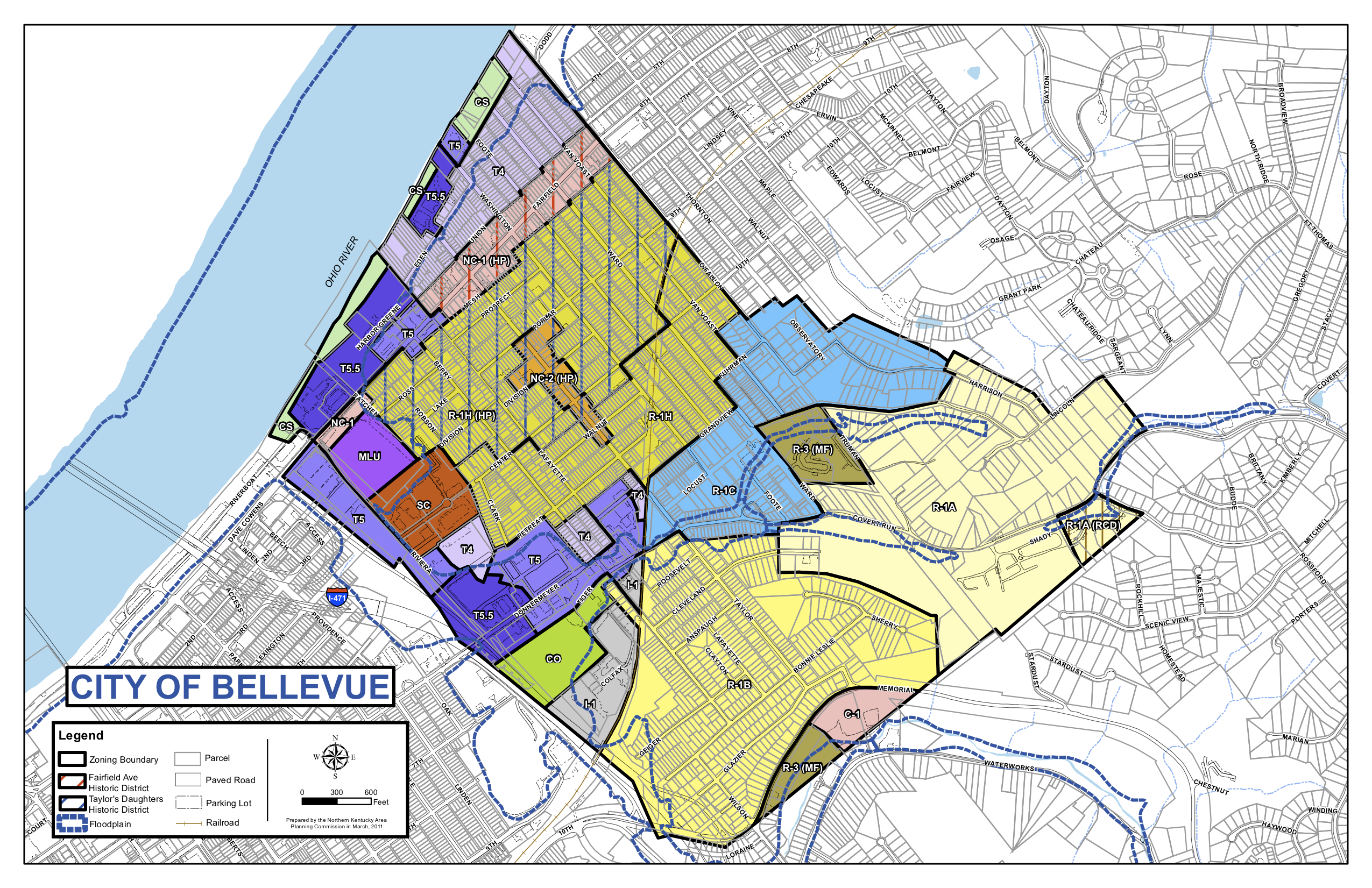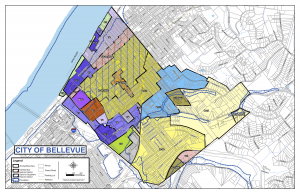The city of Bellevue, Kentucky has became the first in the Greater Cincinnati region to fully adopt a form-based zoning code. Unlike traditional zoning regulations, which focus mostly on land use type, the form-based code focuses on the overall built environment. Bellevue’s code ensures that new development will fit into the city’s existing pedestrian-friendly urban fabric.
The city formally began the process of adopting the form-based code in early 2010. In February 2010, citizens were invited to participate in a “visualization survey” gauging what types of built environments were preferred. In March, a week-long public input process, or charette, allowed the city and its citizens to collaborate on more of the code’s details.
“People want places that are memorable. Bellevue has that in its historic districts and that’s one of the things that have helped guide this code,” explained Jeff Raser of Glaserworks, an architectural and urban design firm involved in implementing Bellevue’s code.
The final step in implementing the code was the adoption of a map amendment, which occurred on Wednesday, March 16. The amendment applied the new code to two areas of the city that were identified as planning areas during the charette – the riverfront and the shopping plaza area on Donnermeyer Drive.
The form-based code, which was widely supported by residents and business owners in Bellevue, maybe put to good use rather quickly.
“The are projects in the pipeline that will make use of the new form-based code,” said John Yung, zoning administrator for the city.

